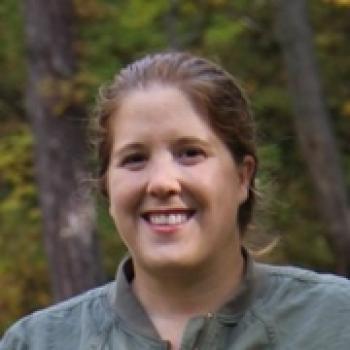Biography
Jessica Metcalfe started as an Assistant Physicist at Argonne National Laboratory in 2015. She joined the ATLAS group in the High Energy Physics (HEP) division where she searches for new physics beyond the Standard Model of particle physics and works on the development of pixel detectors.
She started working in a HEP lab as an undergraduate at the University of Oregon working with resistive plate chambers for muon detection for the BaBar experiment at SLAC. She continued down this path at the University of California Santa Cruz where she began studying electronics for making particle detectors and understanding radiation effects they will experience in the ATLAS detector at the Large Hadron Collider (LHC) at CERN. Jessica earned her PhD at the University of New Mexico where she continued to study radiation damage effects in silicon sensors. When the LHC turned on in 2009, she looked at discerning the quark flavor of certain types of particle ‘jets’. She switched back to muon systems for her postdoc at Brookhaven National Laboratory where she did performance evaluations of the front-end electronics, the VMM ASIC, as well as the micromegas muon detectors. At the same time, she started working on vector boson scattering (VBS) in the same (electric charge) sign WW (ssWW) channel.
Jessica’s current work revolves around VBS measurements and silicon pixel detectors. VBS channels provide a window into the nature of electroweak symmetry breaking and could also be affected by new physics processes. It is an excellent way to search for any signs of beyond Standard Model physics by looking for excesses above the SM predictions.
She will be spearheading Argonne’s efforts to produce pixel modules for the ATLAS Phase II upgrade of the inner tracking detector (ITK). This work includes building a new clean room space and developing the expertise for assembly and testing silicon pixel modules. She is also interested in pushing the boundaries of current silicon detector technology by looking at ways to integrate the sensor and the electronics through vertical integration and through enhancing the design of monolithic CMOS sensors. On the horizon, Jessica would like to transform particle detector technology through the development of Thin Film Detectors using a combination of leading edge sensor design concepts in inexpensive fabrication techniques
